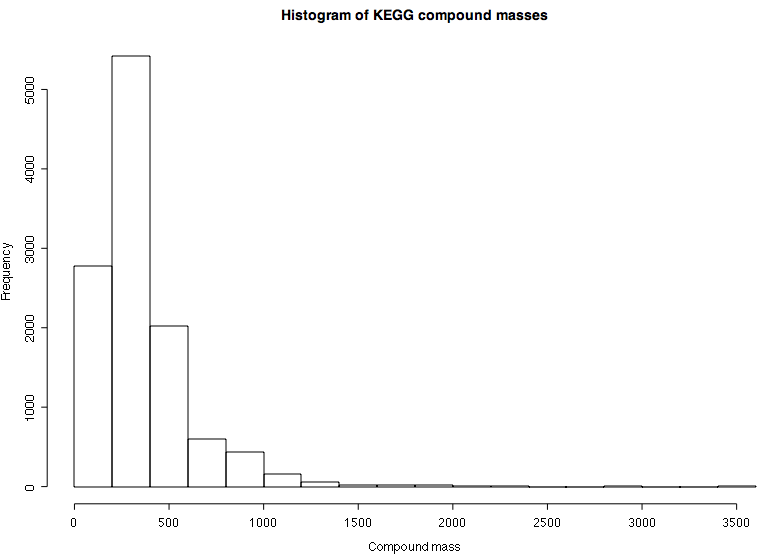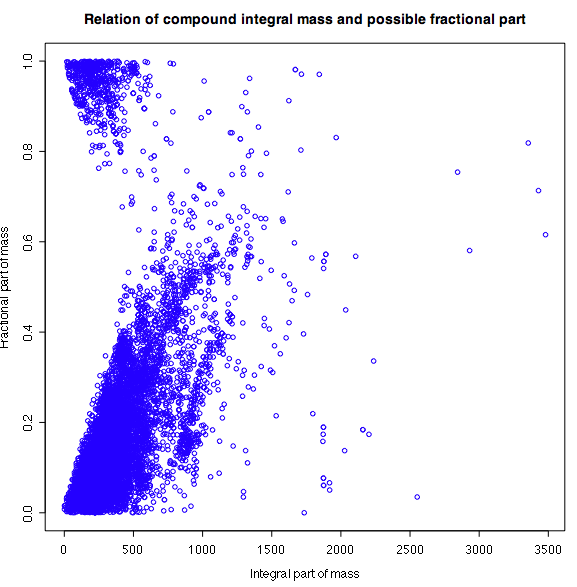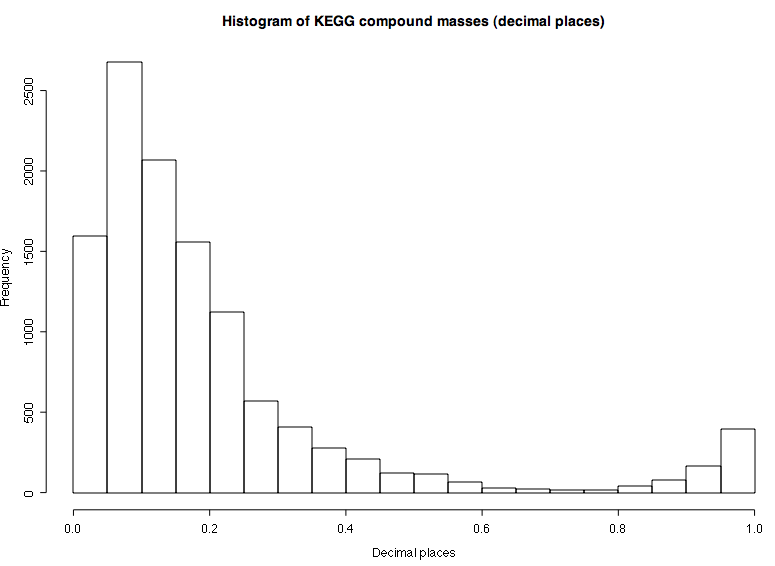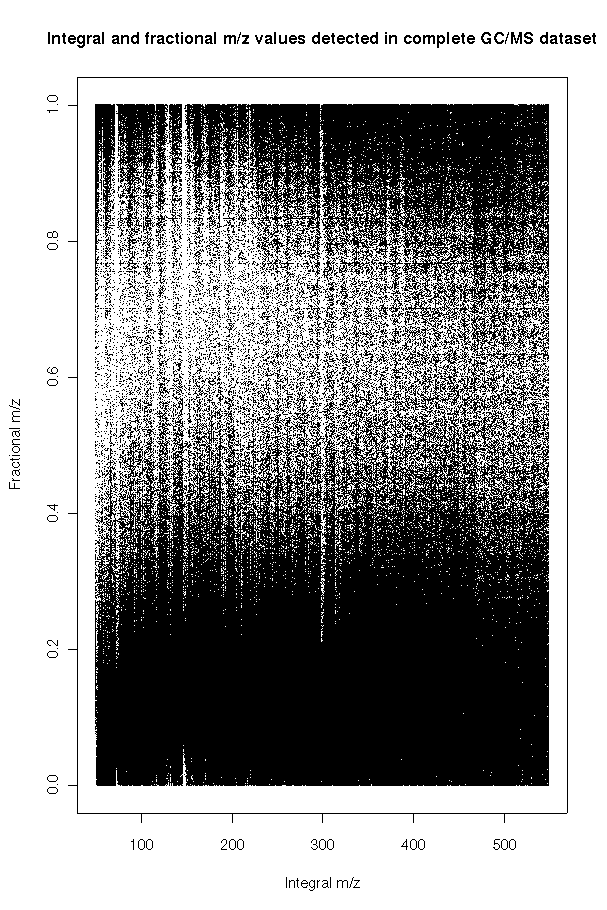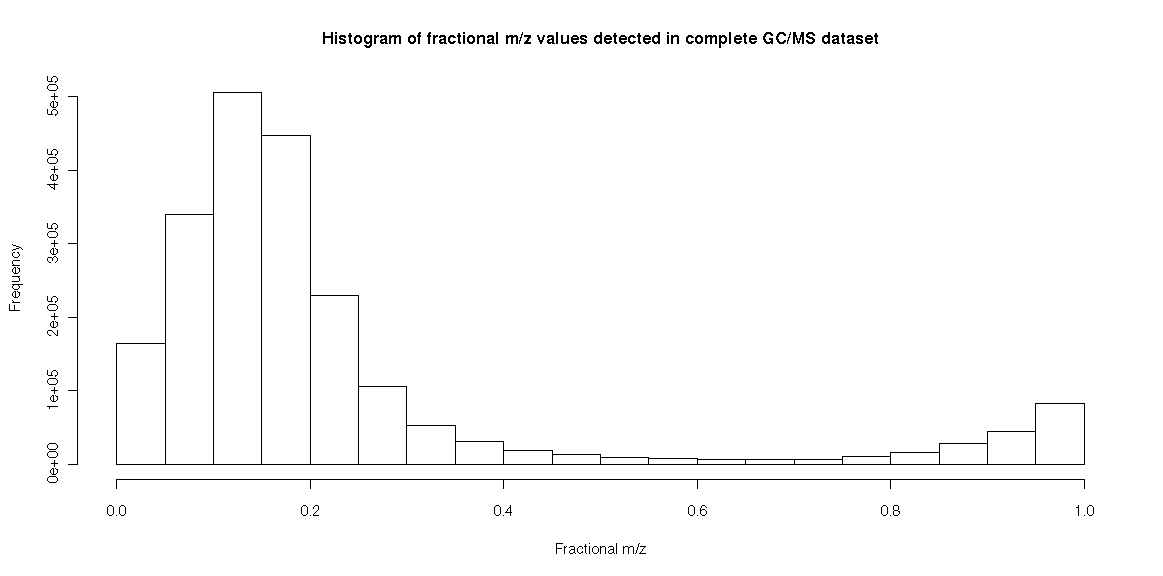MeltDBWiki/RoundingMZ: Difference between revisions
Jump to navigation
Jump to search
imported>HeikoNeuweger No edit summary |
imported>HeikoNeuweger No edit summary |
||
| Line 20: | Line 20: | ||
[[Image:MeltDBWiki$$RoundingMZ$histmz.png]] | [[Image:MeltDBWiki$$RoundingMZ$histmz.png]] | ||
* For all masses measured by a MS instrument (Ion Trap) during a complete chromatogram, the distribution of the values is comparable. | |||
* Here, in the fractional interval 0.6 to 0.65 only 15 compounds are listed in the KEGG compounds database. | |||
[[Image:MeltDBWiki$$RoundingMZ$mzfrac.png]] | |||
[[Image:MeltDBWiki$$RoundingMZ$cdfhist.png]] | |||
Revision as of 20:41, 10 April 2008
Round m/z values of mass spectra to integral values
- Several mass spectral databases contain mass spectra in nominal m/z notation whereas MS instruments are able to obtain higher resolution.
- High resolution mass spectra can be compared to nominal m/z spectra by rounding the measured m/z values to integral values.
- The KEGG compounds database contains more than 10000 compounds with annotated masses and most of the masses are below 1000 Dalton.
- C, H, N, O, P, S are the main atoms of biological compounds.
- The possible fractional values of the compound masses are dependent on the integral compound mass.
- Mass spectrometric devices may drift, meassured m/z values can therefore vary.
- To round m/z to integral values as robust as possible, 0.75 instead of 0.5 may be used.
- In the fractional interval 0.725 to 0.775 only 15 compounds are listed in the KEGG compounds database.
- For all masses measured by a MS instrument (Ion Trap) during a complete chromatogram, the distribution of the values is comparable.
- Here, in the fractional interval 0.6 to 0.65 only 15 compounds are listed in the KEGG compounds database.
